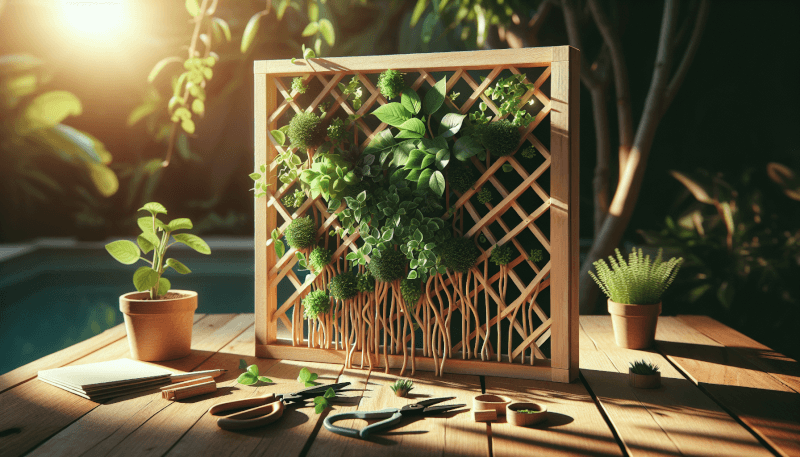Are you eager to transform your outdoor space into a lush, green oasis but limited on space? Look no further! In this article, we will guide you through the best ways to start a DIY vertical garden. Whether you have a small balcony, a tiny backyard, or simply want to add some visual appeal to your wall, these tips and tricks will help you create a stunning vertical garden that will make all your neighbors green with envy. From selecting the right plants to maximizing space, we’ve got you covered. So grab your gardening gloves and let’s get started on this exciting green journey!
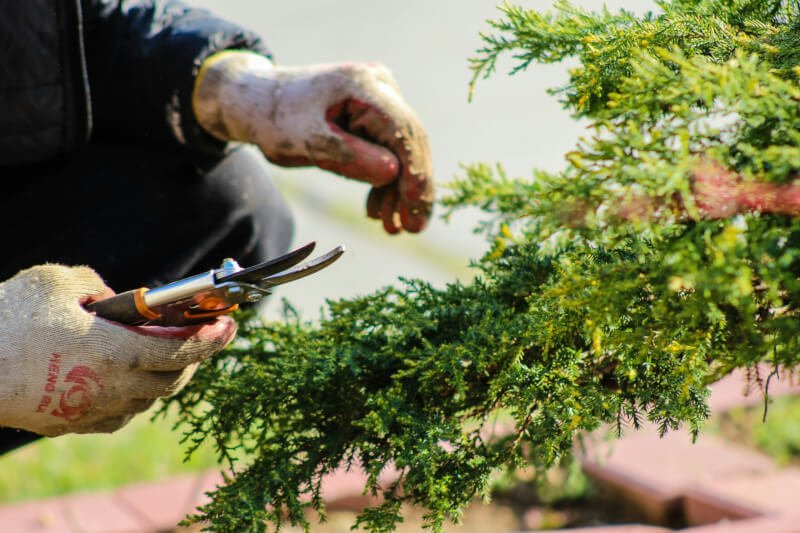
Materials Needed
To start a DIY vertical garden, you will need several materials to ensure the success of your project. Here is a list of the essential materials:
Plants
The first thing you will need for your vertical garden is the plants themselves. Choose plants that are suitable for vertical gardening, such as vine plants, herbs, or small vegetables. Consider the climate and conditions of your location when selecting plants.
Containers
Choosing the right containers is crucial for a vertical garden. Opt for containers that are lightweight, durable, and have proper drainage. Hanging baskets, wall pockets, or planters with built-in trellises are excellent options for vertical gardening.
Support Structure
A support structure is necessary to hold your vertical garden in place. Depending on your available space and design preference, you can choose from wall-mounted supports, free-standing structures, or hanging supports. Ensure that your chosen structure is sturdy enough to hold the weight of the plants and containers.
Soil
Using the right soil is essential for the health and growth of your plants. Invest in nutrient-rich soil mixes designed specifically for container gardening. Additionally, consider incorporating water-retaining materials, such as vermiculite or coconut coir, to help retain moisture in the soil.
Watering System
A proper watering system is crucial for the maintenance of a vertical garden. Depending on your preferences and resources, you can opt for a drip irrigation system, a misting system, or self-watering containers. Make sure your chosen watering system is suitable for the type of plants you have and provides adequate hydration.
Choosing the Right Location
Before starting your vertical garden, it is essential to choose the right location. Here are some factors to consider when selecting the perfect spot:
Sunlight Exposure
Most plants require a certain amount of sunlight to thrive. Observe the sunlight patterns in your chosen location throughout the day. Ideally, your vertical garden should receive at least six hours of direct sunlight or bright, indirect light.
Space Availability
Assess the available space in your home or outdoor area. Measure the dimensions and consider the weight capacity of the support structure you plan to use. Ensure that there is enough space for the vertical garden to grow without overcrowding or obstructing other areas.
Accessibility
Consider the accessibility of the location for watering, maintenance, and harvesting. Ensure that you can easily reach the plants and containers without any obstacles in the way. Accessibility is particularly important if you plan on growing edible plants or herbs that require regular harvesting.
Designing Your Vertical Garden
Now that you have chosen the location, it’s time to design your vertical garden. Pay attention to the following aspects when designing your vertical garden:
Layout Planning
Consider the overall layout and arrangement of your vertical garden. Determine the number of containers and the placement of each plant. Create a design that is aesthetically pleasing and allows each plant to have enough space to grow.
Plant Selection
Choose plants that are suitable for vertical gardening. Consider factors such as growth habit, size, and light requirements. Opt for plants that can thrive in the conditions provided by your chosen location.
Color and Texture
Add visual interest to your vertical garden by selecting plants with varying colors and textures. Mix different shades of green with pops of colorful flowers or foliage. Create a visually appealing display that will be a focal point in your space.
Vertical Structures
Consider incorporating vertical structures into your design to provide support and visually enhance your vertical garden. These structures can include trellises, wire grids, or hanging ropes. Choose structures that align with your design aesthetic and provide added stability.
Preparing the Containers
Before planting your vertical garden, you must properly prepare the containers. Here are the steps to follow:
Cleaning and Sterilization
Thoroughly clean your containers to remove any dirt or debris. Use mild soap and water to wash the containers, ensuring that they are free from any potential pathogens or pests. Sterilizing the containers helps prevent the spread of diseases and ensures a healthy growing environment.
Drainage Holes
Check if your containers have adequate drainage holes. If they don’t, drill additional holes to allow excess water to escape. Proper drainage is crucial to prevent waterlogging and root rot, which can lead to plant health issues.
Adding Support Hooks or Lattice
If you plan on using a support structure, add support hooks or lattice to your containers before planting. This will make it easier to attach or hang the containers securely to the structure. Ensure that the hooks or lattice are properly fastened for stability.
Painting or Decorating
If desired, consider painting or decorating your containers to add a personal touch to your vertical garden. Use non-toxic paint or waterproof sealant to protect the containers from weathering. Let your creativity shine and make your vertical garden containers unique.
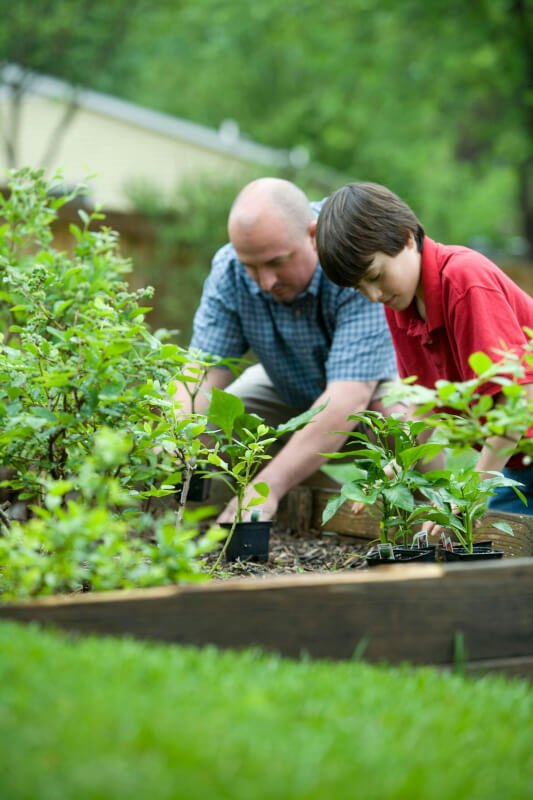
Setting Up the Support Structure
Once the containers are ready, it’s time to set up the support structure for your vertical garden. Depending on your chosen structure, follow these guidelines:
Wall-mounted Support
For a wall-mounted support, identify the wall studs or use anchors to ensure stability. Use screws or hooks to secure the structure to the wall. Ensure that the structure is level and capable of supporting the weight of the containers when filled with soil and plants.
Free-standing Support
If you opt for a free-standing structure, assemble it according to the manufacturer’s instructions. Ensure that all connections are secure and stable. Place the structure in its designated location, making sure it is level and capable of withstanding wind or other environmental factors.
Hanging Support
When using a hanging support system, attach hooks or hanging brackets to the desired location. Ensure that the hooks or brackets are securely fastened to support the weight of the containers. Hang the containers at the desired height and spacing, ensuring they are balanced and evenly distributed.
Choosing the Right Soil
Choosing the appropriate soil is essential for the well-being of your plants. Consider the following factors when selecting soil for your vertical garden:
Nutrient-rich Soil Mix
Opt for a high-quality soil mix specifically formulated for container gardening. These mixes are well-draining and contain essential nutrients for optimal plant growth. Avoid using garden soil, as it tends to become compacted in containers and hinders root development.
Water-retaining Materials
Incorporate water-retaining materials, such as vermiculite or coconut coir, into the soil mix. These materials help retain moisture, ensuring that your plants receive adequate hydration without waterlogging. This is particularly crucial in vertical gardens, where water can quickly drain away.
Drainage Improvement
Consider adding perlite or coarse sand to the soil mix to improve drainage. These additives help prevent water from stagnating in the soil, reducing the risk of root rot. Ensure that the soil mix has a balance between water retention and drainage for optimal plant health.
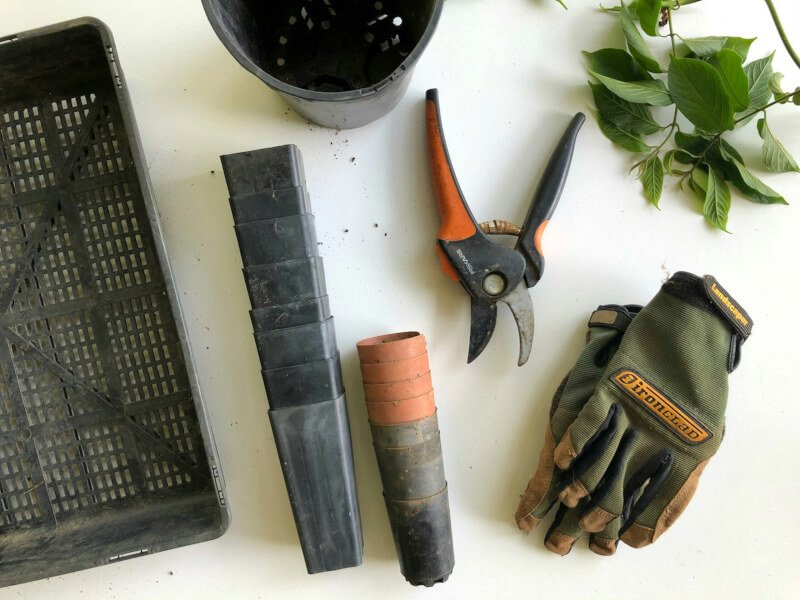
Planting and Arranging the Plants
With your containers prepared and the soil ready, it’s time to plant and arrange your plants in the vertical garden. Follow these steps for successful planting:
Planting Techniques
Gently remove the plants from their nursery pots and loosen the roots. Make a hole in the soil large enough to accommodate the root ball. Place the plant in the hole and backfill with soil, firmly pressing it to eliminate air pockets. Water the newly planted plants to settle the soil around the roots.
Spacing and Arrangement
Consider the mature size of each plant when determining the spacing between them. Leave enough space for each plant to grow without overcrowding or competing for resources. Arrange the plants in a visually pleasing manner, taking into account their growth habits and the overall design of your vertical garden.
Mixing Different Plant Types
To create a dynamic and visually interesting vertical garden, mix different types of plants. Combine trailing vine plants with upright herbs or flowering plants. This combination adds depth and texture to your garden, making it more visually appealing.
Installing a Watering System
To ensure efficient and consistent watering for your vertical garden, consider installing a watering system. Here are some options to choose from:
Drip Irrigation
Drip irrigation is an excellent watering system for vertical gardens. It delivers water directly to the plant’s root zone, reducing water waste and preventing foliage from getting wet. Install a drip irrigation system with emitters placed strategically near each plant to ensure proper hydration.
Misting System
A misting system provides a fine spray of water that helps humidify the air and keep the plants hydrated. This system is particularly beneficial for plants that prefer higher humidity levels. Install the misting system near the top of your vertical garden, ensuring that the mist reaches all the plants.
Self-watering Containers
Consider using self-watering containers for your vertical garden. These containers have built-in reservoirs that automatically provide water to the plants as needed. This eliminates the need for constant watering and reduces the risk of over or underwatering.
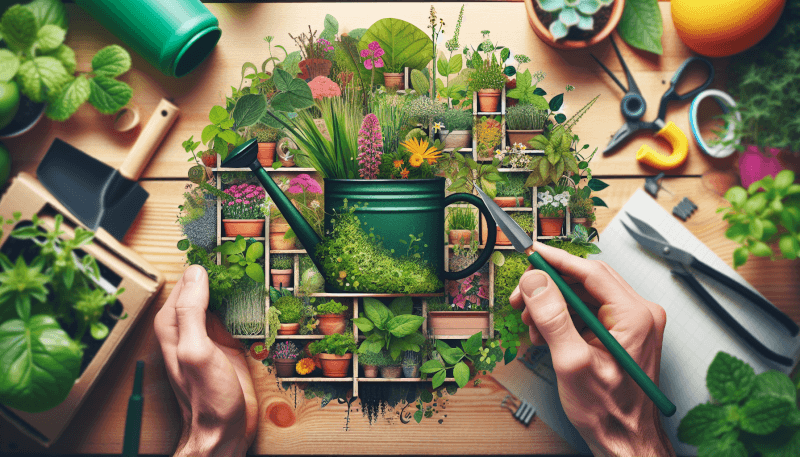
Regular Maintenance
Like any garden, a vertical garden requires regular maintenance to ensure healthy plant growth. Here are some tasks to include in your maintenance routine:
Watering Schedule
Establish a consistent watering schedule based on the needs of your plants. Avoid overwatering or underwatering by monitoring the moisture level of the soil. Adjust the watering frequency based on the season and environmental conditions.
Weeding and Pruning
Regularly inspect your vertical garden for weeds and remove them promptly to prevent competition for nutrients and moisture. Additionally, prune your plants as needed to promote healthy growth and maintain their desired shape.
Fertilizing
Provide regular fertilization to your plants to replenish nutrients in the soil. Use a balanced, slow-release fertilizer or organic compost. Follow the manufacturer’s instructions for proper application and avoid overfertilization, as it can lead to nutrient imbalance or burn the plants’ roots.
Pest Control
Monitor your vertical garden for pests and take appropriate measures to control their population. Inspect the leaves, stems, and soil regularly for signs of infestation. Use organic or chemical treatments as necessary, following the instructions and precautions provided by the manufacturer.
Monitoring and Troubleshooting
Keeping a close eye on your vertical garden will help identify and address any issues that may arise. Here are some areas to monitor:
Checking for Watering Issues
Regularly check the soil moisture level to ensure that your plants are receiving adequate hydration. Dry or waterlogged soil can stress the plants and impact their overall health. Adjust your watering schedule accordingly.
Identifying Pests and Diseases
Inspect your plants for any signs of pests or diseases. Look for yellowing leaves, wilting, or unusual spots on the foliage. Early identification allows for prompt treatment, preventing further damage to your plants.
Addressing Nutrient Deficiencies
Pay attention to any signs of nutrient deficiencies, such as yellowing leaves or stunted growth. Adjust your fertilization routine or consider supplementing with additional nutrients, if necessary, to ensure optimal plant health.
Revitalizing Wilting Plants
If you notice wilting or unhealthy plants in your vertical garden, take immediate action. Check the soil moisture, adjust watering, or relocate the affected plants to a more suitable location. Revitalize the plants by providing proper care and addressing any underlying issues.
Starting a DIY vertical garden is an exciting project that allows you to create a stunning display of plants in limited space. By following these guidelines and maintaining regular care, your vertical garden will thrive and become a beautiful addition to your home or outdoor area. Enjoy the process and watch your garden flourish!
